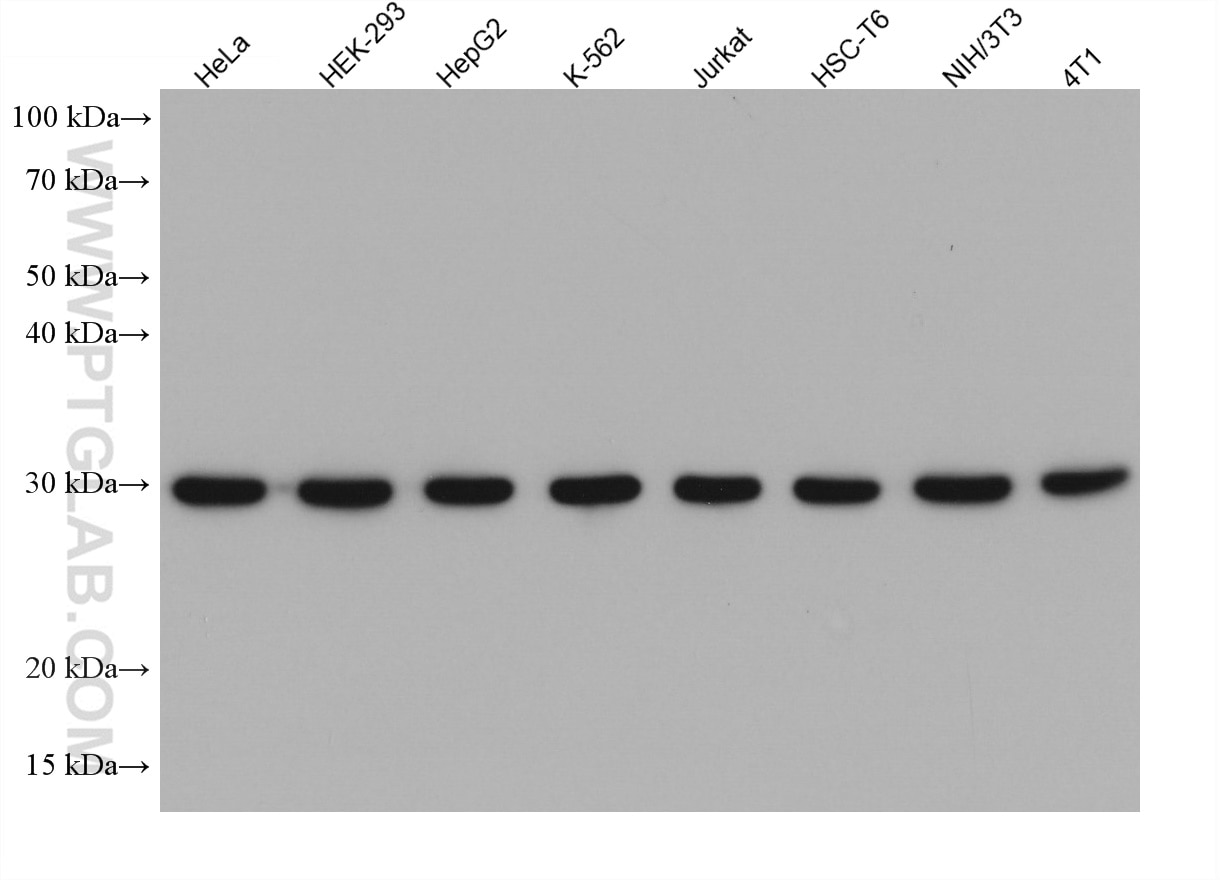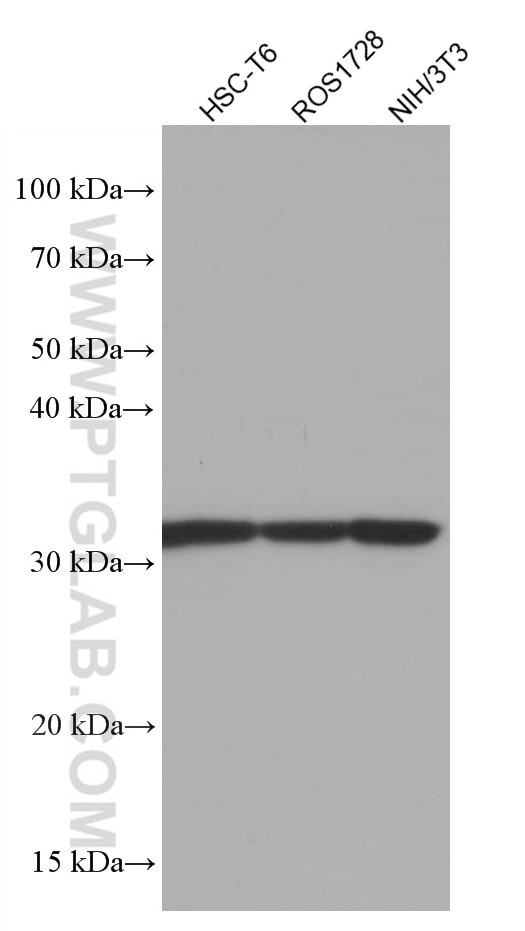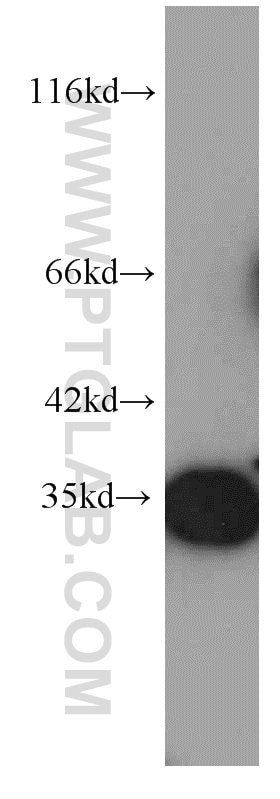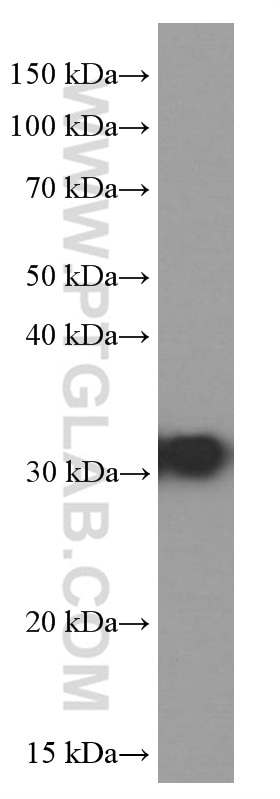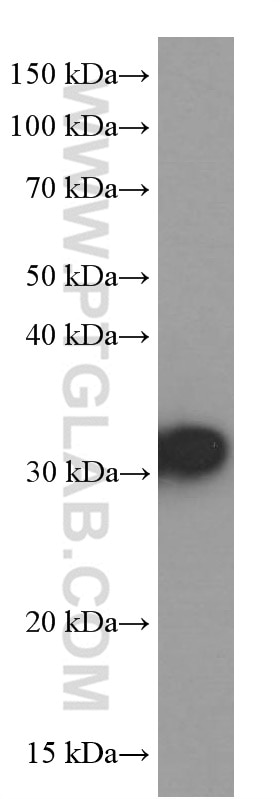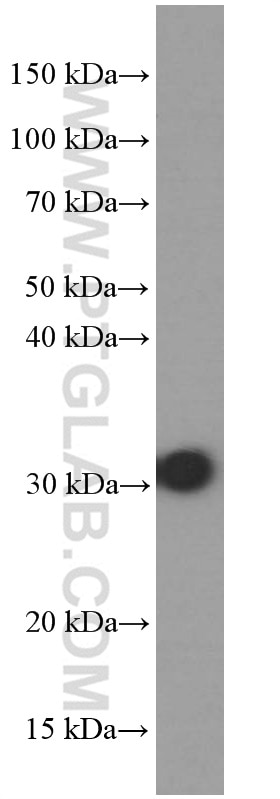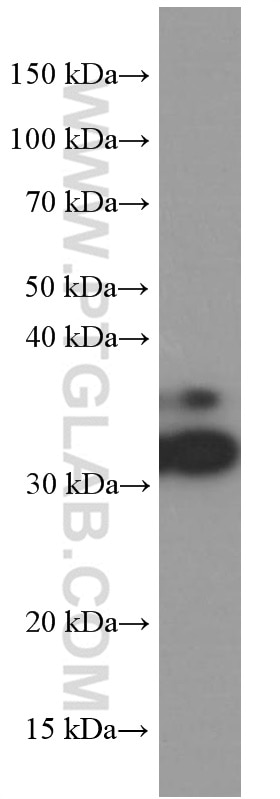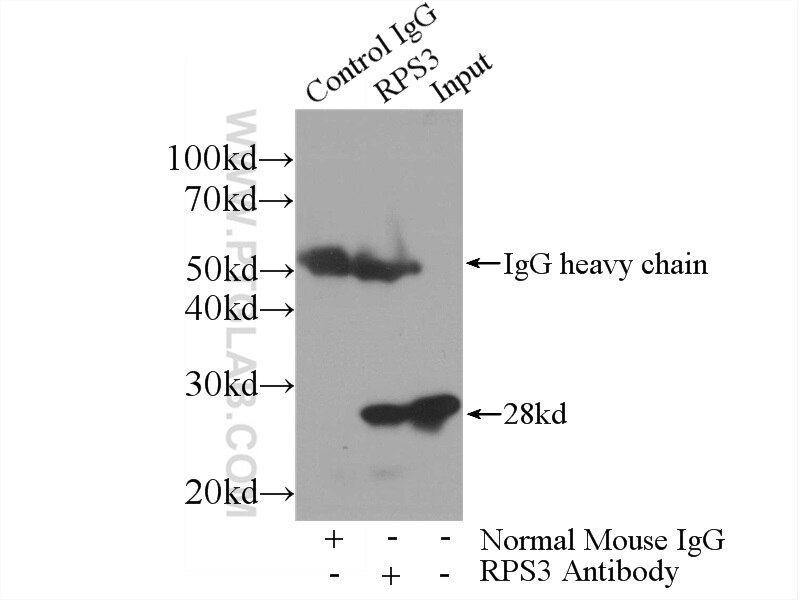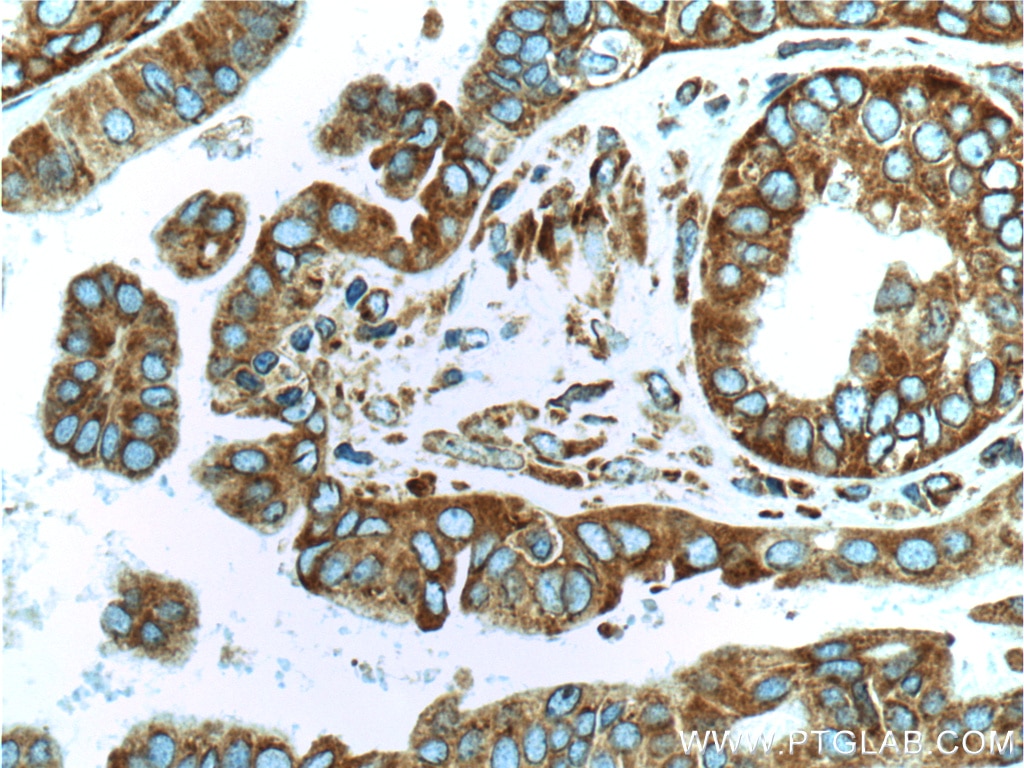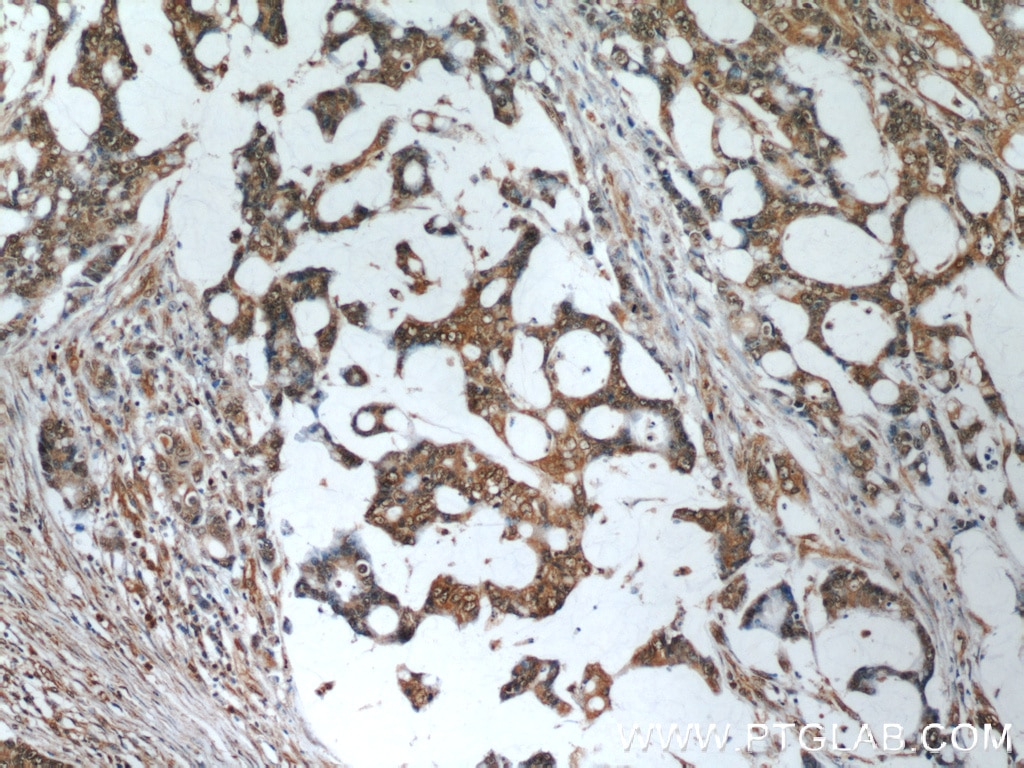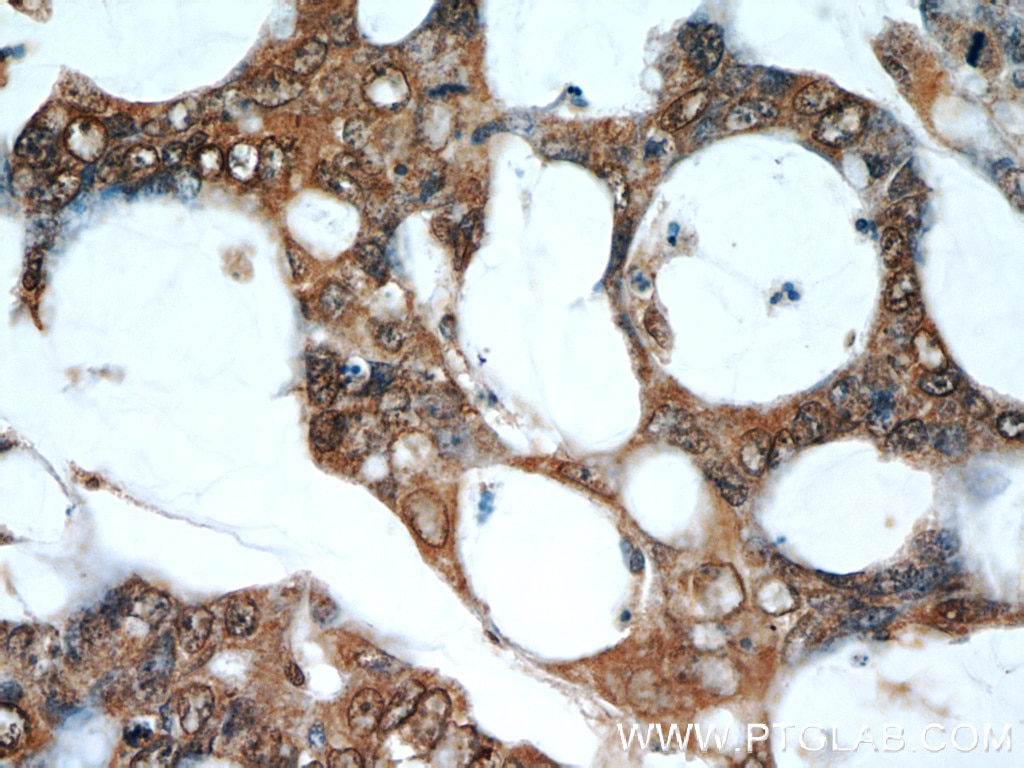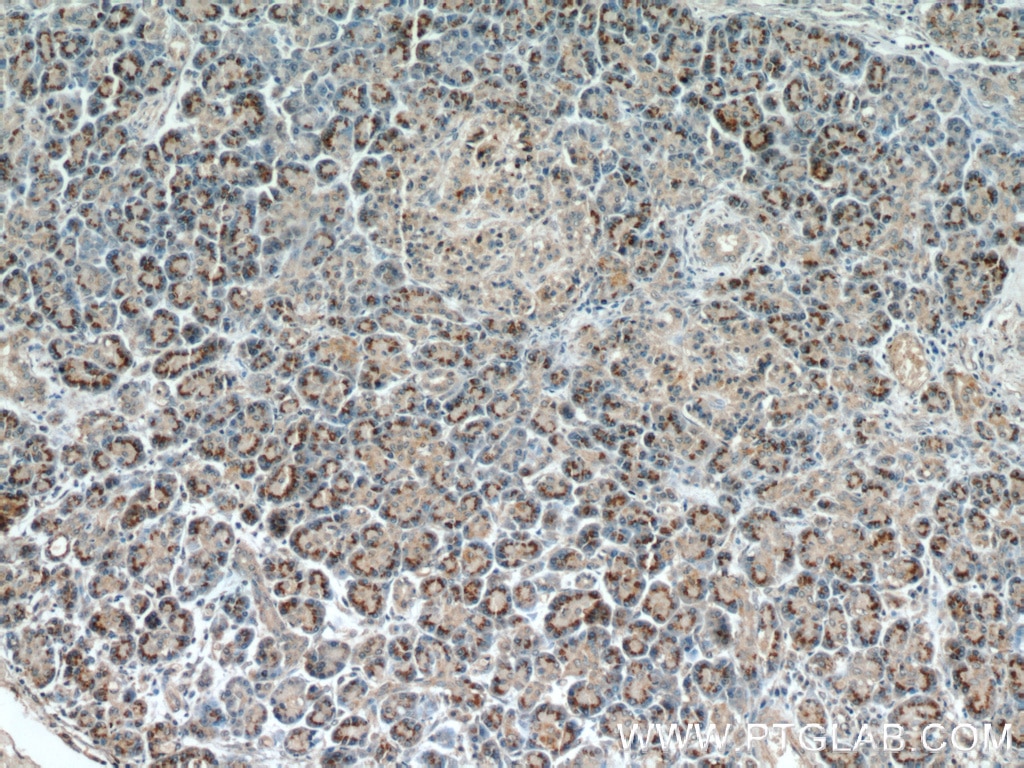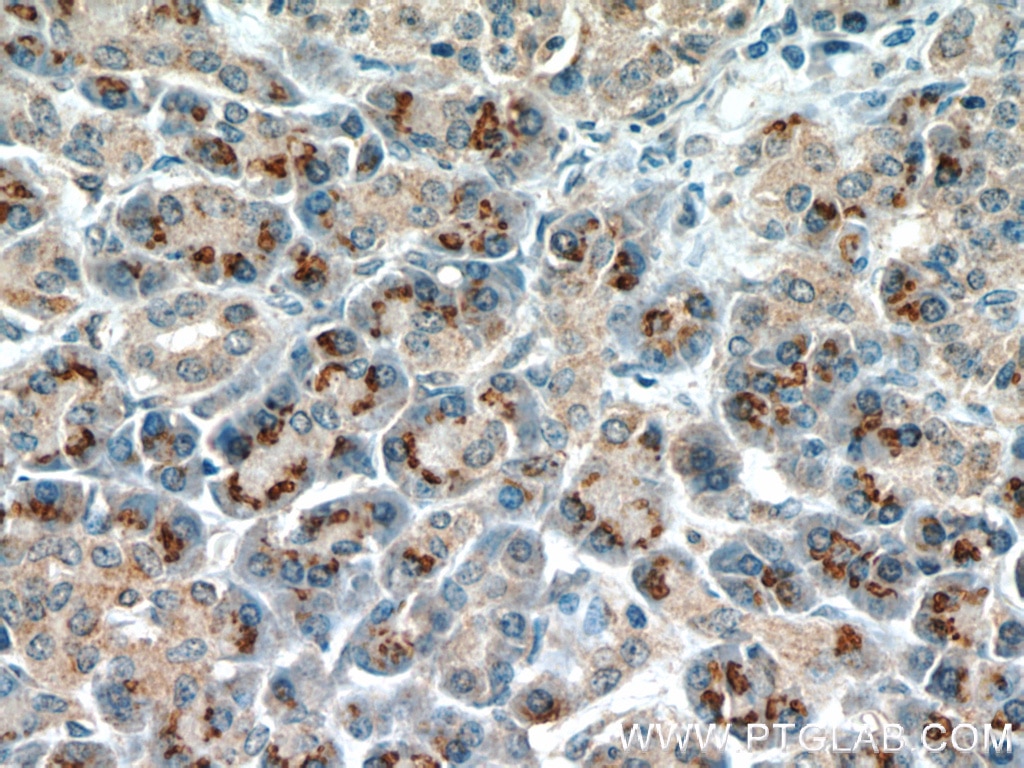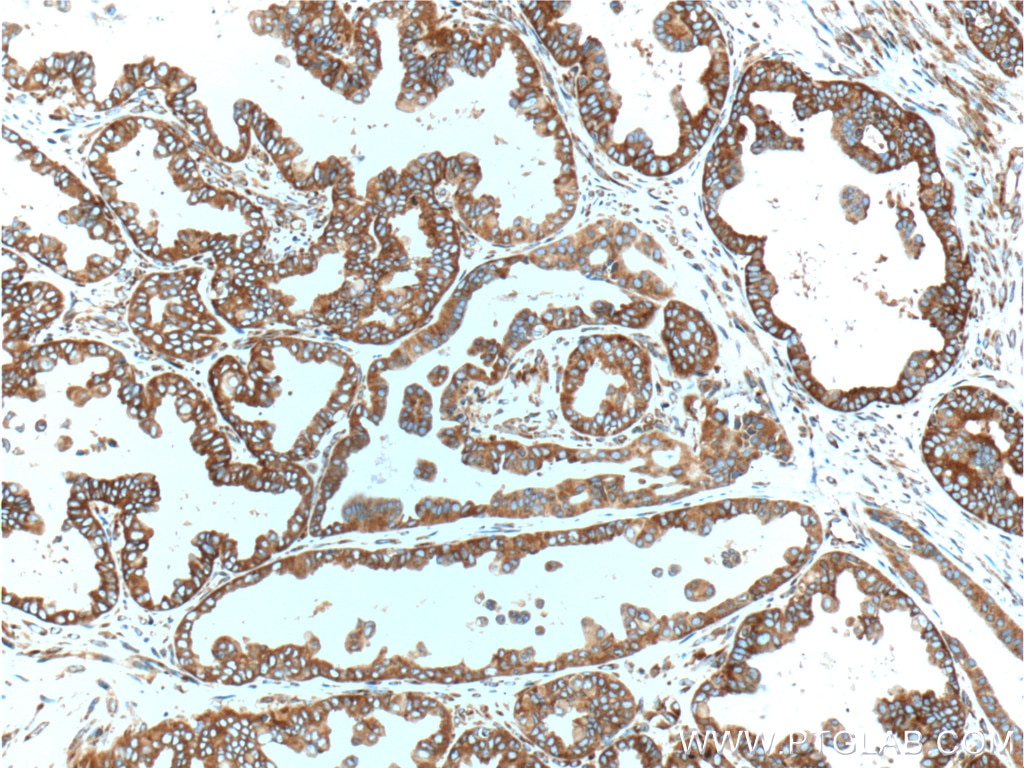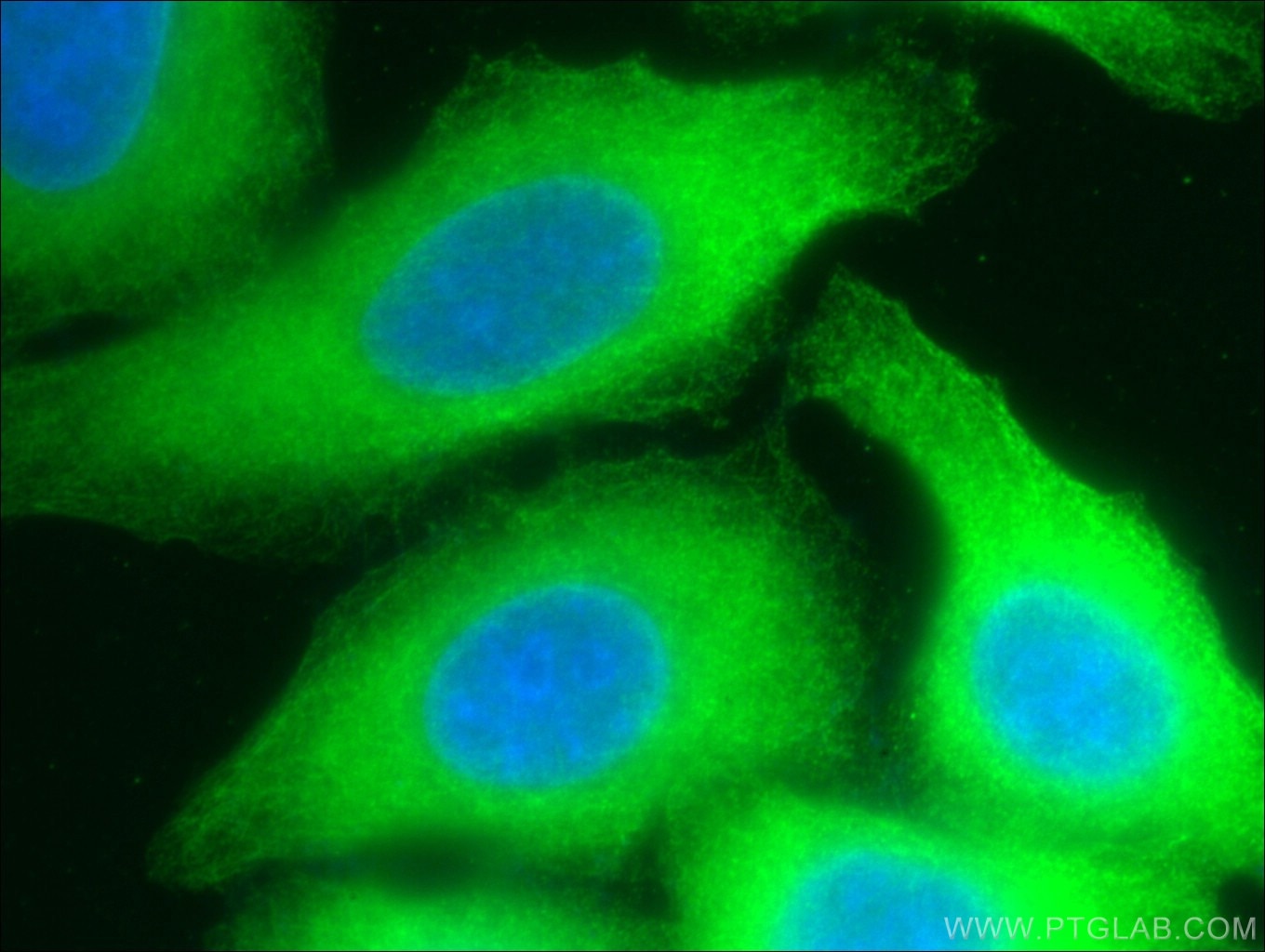- Featured Product
- KD/KO Validated
RPS3 Monoklonaler Antikörper
RPS3 Monoklonal Antikörper für IF, IHC, IP, WB, ELISA
Wirt / Isotyp
Maus / IgG2a
Getestete Reaktivität
human, Maus, Ratte
Anwendung
WB, IP, IHC, IF, FC, ChIP, ELISA
Konjugation
Unkonjugiert
CloneNo.
2G7H4
Kat-Nr. : 66046-1-Ig
Synonyme
Galerie der Validierungsdaten
Geprüfte Anwendungen
| Erfolgreiche Detektion in WB | HSC-T6 cells, 4T1-Zellen, HEK-293-Zellen, HeLa-Zellen, HepG2-Zellen, humanes Hirngewebe, Jurkat-Zellen, K-562-Zellen, Neuro-2a-Zellen, NIH/3T3-Zellen, Rattenhirngewebe, RAW 264.7-Zellen, ROS1728-Zellen |
| Erfolgreiche IP | HEK-293-Zellen |
| Erfolgreiche Detektion in IHC | humanes Ovarialkarzinomgewebe, humanes Kolonkarzinomgewebe, humanes Pankreasgewebe Hinweis: Antigendemaskierung mit TE-Puffer pH 9,0 empfohlen. (*) Wahlweise kann die Antigendemaskierung auch mit Citratpuffer pH 6,0 erfolgen. |
| Erfolgreiche Detektion in IF | HepG2-Zellen |
Empfohlene Verdünnung
| Anwendung | Verdünnung |
|---|---|
| Western Blot (WB) | WB : 1:20000-1:100000 |
| Immunpräzipitation (IP) | IP : 0.5-4.0 ug for 1.0-3.0 mg of total protein lysate |
| Immunhistochemie (IHC) | IHC : 1:50-1:500 |
| Immunfluoreszenz (IF) | IF : 1:50-1:500 |
| It is recommended that this reagent should be titrated in each testing system to obtain optimal results. | |
| Sample-dependent, check data in validation data gallery | |
Veröffentlichte Anwendungen
| KD/KO | See 1 publications below |
| WB | See 8 publications below |
| IHC | See 2 publications below |
| IF | See 2 publications below |
| FC | See 1 publications below |
| ChIP | See 1 publications below |
Produktinformation
66046-1-Ig bindet in WB, IP, IHC, IF, FC, ChIP, ELISA RPS3 und zeigt Reaktivität mit human, Maus, Ratten
| Getestete Reaktivität | human, Maus, Ratte |
| In Publikationen genannte Reaktivität | human, Maus |
| Wirt / Isotyp | Maus / IgG2a |
| Klonalität | Monoklonal |
| Typ | Antikörper |
| Immunogen | RPS3 fusion protein Ag7515 |
| Vollständiger Name | ribosomal protein S3 |
| Berechnetes Molekulargewicht | 27 kDa |
| Beobachtetes Molekulargewicht | 33 kDa |
| GenBank-Zugangsnummer | BC003137 |
| Gene symbol | RPS3 |
| Gene ID (NCBI) | 6188 |
| Konjugation | Unkonjugiert |
| Form | Liquid |
| Reinigungsmethode | Protein-A-Reinigung |
| Lagerungspuffer | PBS mit 0.02% Natriumazid und 50% Glycerin pH 7.3. |
| Lagerungsbedingungen | Bei -20°C lagern. Nach dem Versand ein Jahr lang stabil Aliquotieren ist bei -20oC Lagerung nicht notwendig. 20ul Größen enthalten 0,1% BSA. |
Hintergrundinformationen
40S ribosomal protein S3 (RPS3), also named as SW-cl.26, is a 243 amino acid protein,which contains one KH type-2 domain and belongs to the ribosomal protein S3P family. RPS3 localizes in the cytoplasm. RPS3 is identified in a IGF2BP1-dependent mRNP granule complex, which contains untranslated mRNAs. RPS3 plays a role in repairing various DNA damage acting as a repair UV endonuclease. Nuclear accumulation of RPS3 results in an increase in DNA repair activity to some extent, thereby sustaining neuronal survival. The calculated molecular weight of RPS3 is 26 kDa, but the modified RPS3 is about 33 kDa.
Protokolle
| Produktspezifische Protokolle | |
|---|---|
| WB protocol for RPS3 antibody 66046-1-Ig | Protokoll herunterladen |
| IHC protocol for RPS3 antibody 66046-1-Ig | Protokoll herunterladen |
| IF protocol for RPS3 antibody 66046-1-Ig | Protokoll herunterladen |
| IP protocol for RPS3 antibody 66046-1-Ig | Protokoll herunterladen |
| Standard-Protokolle | |
|---|---|
| Klicken Sie hier, um unsere Standardprotokolle anzuzeigen |
Publikationen
| Species | Application | Title |
|---|---|---|
Transl Res Ribosomal proteins as distinct "passengers" of microvesicles: new semantics in myeloma and mesenchymal stem cells' communication. | ||
PLoS Pathog Separate domains of G3BP promote efficient clustering of alphavirus replication complexes and recruitment of the translation initiation machinery. | ||
Free Radic Biol Med Identification of interacting partners of Human Mpv17-like protein with a mitigating effect of mitochondrial dysfunction through mtDNA damage. | ||
Oncotarget Ribosomal protein S3 (rpS3) secreted from various cancer cells is N-linked glycosylated.
| ||
